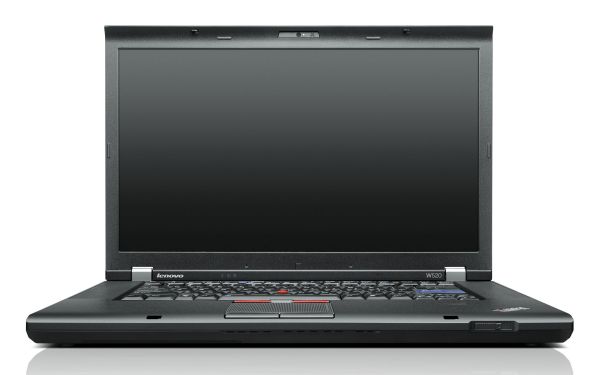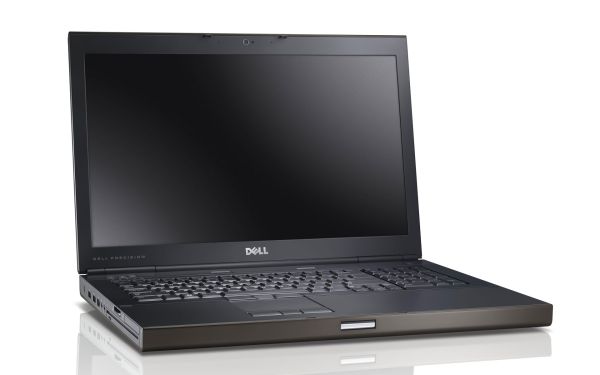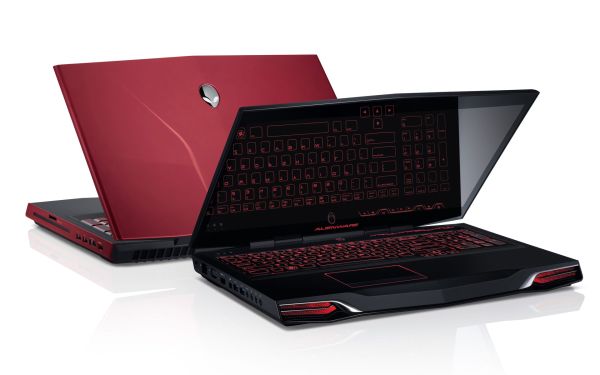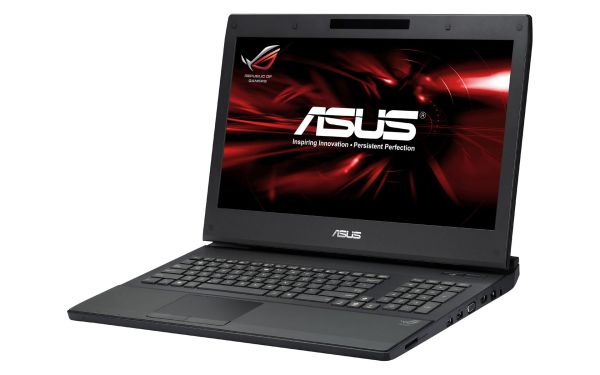Holiday 2011 Laptop Buyer’s Guide
by Jarred Walton on December 2, 2011 3:45 AM ESTGoing for Broke: High-End Laptops and Notebooks
Once we shift pricing to around $2000 and up, we again get a lot of options. There are three primary reasons to go with a high-end (read: expensive) laptop: there’s the no compromise Jack-of-Trades approach, mobile workstations, and no-holds-barred mobile gaming. We’ll take those in turn, though there’s certainly some overlap with the first two.
No Compromises High-End Laptop
A month or so back, one of our readers emailed me asking for advice on what laptop to get. He really wanted it all: battery life, build quality, an excellent display, and even the ability to play games. It’s fine to want it all, but you definitely have to be willing to pay for it. With the display being a major concern—he was very disappointed with most of the laptop displays out there—it narrowed things down a lot. I tossed out the XPS 15 and 15z as possibilities, though their GPUs are a bit underpowered for 1080p gaming. The Alienware M14x also came up, but he felt it was a bit too gaudy. With the Clevo W150HRQ sporting one of the best matte 1080p displays around, we also toyed with that but ultimately ruled it out because of the plastic construction. What was left was a laptop that also fits the next category: mobile workstation (albeit on the lower end of the workstation spectrum).
Built to last, equipped to do (nearly) everything: Lenovo ThinkPad W520 for under $1900
Lenovo’s ThinkPad line has always had a good reputation for build quality, though you’ll generally want to stick with the T-series and W-series to ensure you get the best of what ThinkPad has to offer. The W520 sports the same LCD panel as the Clevo W150HRQ (matte, 95% NTSC color gamut, and about as good as you can get with a TN panel), and it offers up plenty of other upgrades. The base model starts at $1000 and comes with a dual-core CPU, 4GB RAM, 320GB HDD, a Quadro NVS 4200M, and a 1366x768 display—that’s definitely not what we’re after. Grab a bunch of upgrades and you end up with something like this model for $1850.
Lenovo appears to be running some killer sales right now, though, which means you can get additional performance and features and still stay under $2000. We went with the Core i7-2760QM processor, 2x4GB RAM (with two open SO-DIMM slots if you want to upgrade to 16GB), a Quadro 2000M GPU, the 1080p high gamut display, and a built-in colorimeter and with the “TPHOLIDAY” coupon the total still came to under $1900. What’s more, you still get NVIDIA’s Optimus Technology and the large 9-cell battery means you can get upwards of eight hours. The Quadro 2000M is also interesting in that it has the same 192 CUDA cores as the GTX 560M, though at a lower clock and with a 128-bit memory interface; still, it’s enough to handle most games at medium to high detail and 1080p—and if you want to do “real” work, it can handle that as well. It would be great if we could get the W520 with a consumer GPU to save some additional cost, but unfortunately that's not something Lenovo supports; given their focus on business first, it's not too surprising.
Mobile Workstation, Take Two
Okay, the Lenovo ThinkPad W520 certainly qualifies as a mobile workstation, but what if you’re serious about the workstation aspect? Maybe you run some complex CAD/CAM or other scientific software that can benefit from even more GPU performance. In that case, you’re probably looking at Quadro 3000M or higher GPUs, and probably just go for broke with the Quadro 5010M. Sporting a full 384 CUDA cores and a 256-bit memory interface, the Quadro 5010M is the fastest mobile Quadro solution right now. Also, it doesn’t come cheap—not even remotely so. If you want the Quadro 5010M, there are three ways to get there: Dell’s Precision M6600, HP’s EliteBook 8760w, or a Clevo X7200. We’ll just skip the last one, because as potent as the system might be, it’s equally huge and build quality isn’t what we’d want from a $4000+ notebook. So between the Dell M6600 and HP 8760w, which one comes out on top?
For serious work (and serious money): Dell’s Precision M6600 for $4400
We’ve reviewed the HP 8670w, and we’ve tested an earlier version of the M6600 with the Precision M6500; both are clearly targeted at mobile workstation professionals and both have all the support you’d expect for such users. If you’re in the market for such a notebook, there’s a good chance your company is going to decide which one is “best” (because they already have a contract with Dell or HP), but if you have a choice—or if you’re paying out of your own pocket—the Dell Precision M6600 gets the nod for offering basically the same features and performance at a lower price. At the time of writing, you can get the M6600 with an i7-2720QM, 2x4GB RAM, 750GB HDD (or go with a 256GB SSD for $410 more), Quadro 5010M, and a 1080p IPS PremierColor panel for only $4400. Yowza. That includes a $827 instant rebate that Dell is currently running, though, without which the pricing would be a wash. (HP’s 8670w with similar specs currently checks in at $5193.)
Gaming on the Go
Best current gaming laptop: Alienware M17x R3 for $2690
For the mobile gamers who are really serious about gaming, you’ll want the fastest mobile GPU you can find. Sure, you could even go crazy with an SLI or CrossFire notebook, but we’d rather dial it back a bit and remain somewhat sensible. We gave the Alienware M17x R3 a bronze when we reviewed it back in June, and it remains one of the swankiest gaming notebooks around. The starting price of $1500 will get you a quad-core i7-2670QM, 8GB RAM, an HD 6870M, 500GB HDD, and a 900p display. That's actually pretty compelling, and you get switchable graphics (manual Alienware switching with AMD GPUs or NVIDIA Optimus with the green team), so you don't sacrifice battery life—the M17x R3 really does have it all!
Since we're looking at the high-end, though, we'll take the $1900 configuration and upgrade to the GTX 580M for $375 extra, and Alienware also has a $375 upgrade available that will give you a 256GB SSD for your OS and apps with a 750GB 7200RPM HDD for mass storage—just the way we like it. (If you’d rather stick with AMD GPUs, the HD 6990M is $75 less than the GTX 580M.) While we’re upgrading the graphics and other areas, go ahead and throw in the Killer Wireless-N 1103 for $40; it’s a healthy upgrade from Intel’s 2x1 MIMO Wireless-N 1000 and our experience with the 1102 shows that it actually can improve your wireless networking (and gaming) experience.
Good gaming for under two grand: ASUS G74SX for $1939
If spending $2500 or more seems a bit more for a gaming laptop, you can stick with the base setup of the M17x R3, or you might prefer ASUS’ G74SX as an alternative. Like the M17x R3, we gave it a bronze award for offering a nicely balanced gaming notebook, and we did like the fact that ASUS offers an SSD + HDD setup with the G74SX-DH72. The GTX 560M isn’t quite as snappy as the GTX 580M, but it’s enough to run most games (including Skyrim, Battlefield 3, and Batman: Arkham City) at high quality settings and 1080p. We’ll be updating our mobile gaming benchmark suite shortly and will include the G74SX results as a reference point.














88 Comments
View All Comments
stancilmor - Sunday, December 4, 2011 - link
Nice review, are there any laptops with an IPS display and a consumer grade discrete graphics card? The Dell & HP mobile workstations are just too expensive. I can't really play the Frames Per Second games, but I do like the graphics turned way up...works out great for the slower response IPS displays, because I don't play FPS...makes me sea sickPenti - Sunday, December 4, 2011 - link
Forget about IPS and notebooks basically, even HP workstations is useless with IPS panels. The DreamColor 15-inch panel is still a 15W panel. You might find tablet PCs or tablet PC sized machines with IPS or AFFS panels but that's pretty much it. Which of course means no discrete graphics or like a quadro card. FPS games is btw First-Person Shooter :)External display might still be a good option in addition to a TN panel built in. You will just have to sit pretty much straight in front of the notebook screen. Viewing angles on TN-panels vary widely though.
Iketh - Sunday, December 4, 2011 - link
FPS games are "first-person shooter" games. That's where you point and shoot your weapon through the eyes of the character you're controlling.The other FPS is "frames per second", which is used to gauge the speed of graphics cards by indicating how many frames it can render and send to a display each second.
Iketh - Sunday, December 4, 2011 - link
You're arguments to favor 14" over 15.6" should contain an element from the other side instead of being so biased. The biggest plus with going to 15.6" chassis is a number pad and should be mentioned also.DanNeely - Monday, December 5, 2011 - link
Meh. If I could get a 15.6" laptop with the arrow keys and Insert-PageDown block laid out properly I'd be somewhat interested; as it is the only justification I see for the bigger size is 1080p at a slightly less brutal DPI, or more volume for the battery and cooling hardware for a higher end mobile GPU.rdamiani - Sunday, December 11, 2011 - link
After all these years of of using notebooks with the keyboard centered on the screen, a number pad is a minus, not a plus.Mr Bill - Sunday, December 4, 2011 - link
In the $600 category (on sale), I picked up an HP DV6-6140US. A8-3500M Llano quadcore, USB3, 15.6" LED backlit screen and somewhat less important but nice is bluetooth support and blu-ray disk.http://www.officedepot.com/a/products/659317/HP-Pa...
Its not a bad little unit. Would have been nice if the keys were backlit. I hate the 1366 x 768 TN screen, its too narrow and the color rendering is highly directional. Battery life is good, Started playing WOW and its smooth.
aguilpa1 - Monday, December 5, 2011 - link
I agree with Jared, mine is still doing very well as far as performance goes, I can even fire up Skyrim set to high @ 1680x1050 during my lunch break with my ancient 9800MGT and drivers stuck at 180.3 laptop. I imagine if new drivers were available I might even be able to push it all the way up to 1920x1200 full screen at Med-Hi settings.mikedice - Tuesday, December 6, 2011 - link
http://www.bhphotovideo.com/c/product/778959-REG/L...Tamale - Wednesday, December 7, 2011 - link
I just got a brand new Dell Precision M6600 for what must've been the deal of the century - Mobility FirePro M8900 (Radeon M6970 equivalent) version for $1,300. I was able to outfit it with a mini-SATA 128gb SSD, 40gb Intel SSD, and 8gb of extra DDR3 memory (for a total of 12gb of ram) all for ~$1,500., and now it's quite literally the best mobile workstation I could hope for. I run ubuntu at work, but it even gets decent battery life in windows - around 5 hours of light work.It's not small or light, but the 17" 1080p matte finish screen is amazing and the keyboard is top-notch, so I'm definitely a happy camper.
What Jarred is saying about business laptops is SOOOOO true. You simply can't think of them as being in the same league as consumer laptops AT ALL.